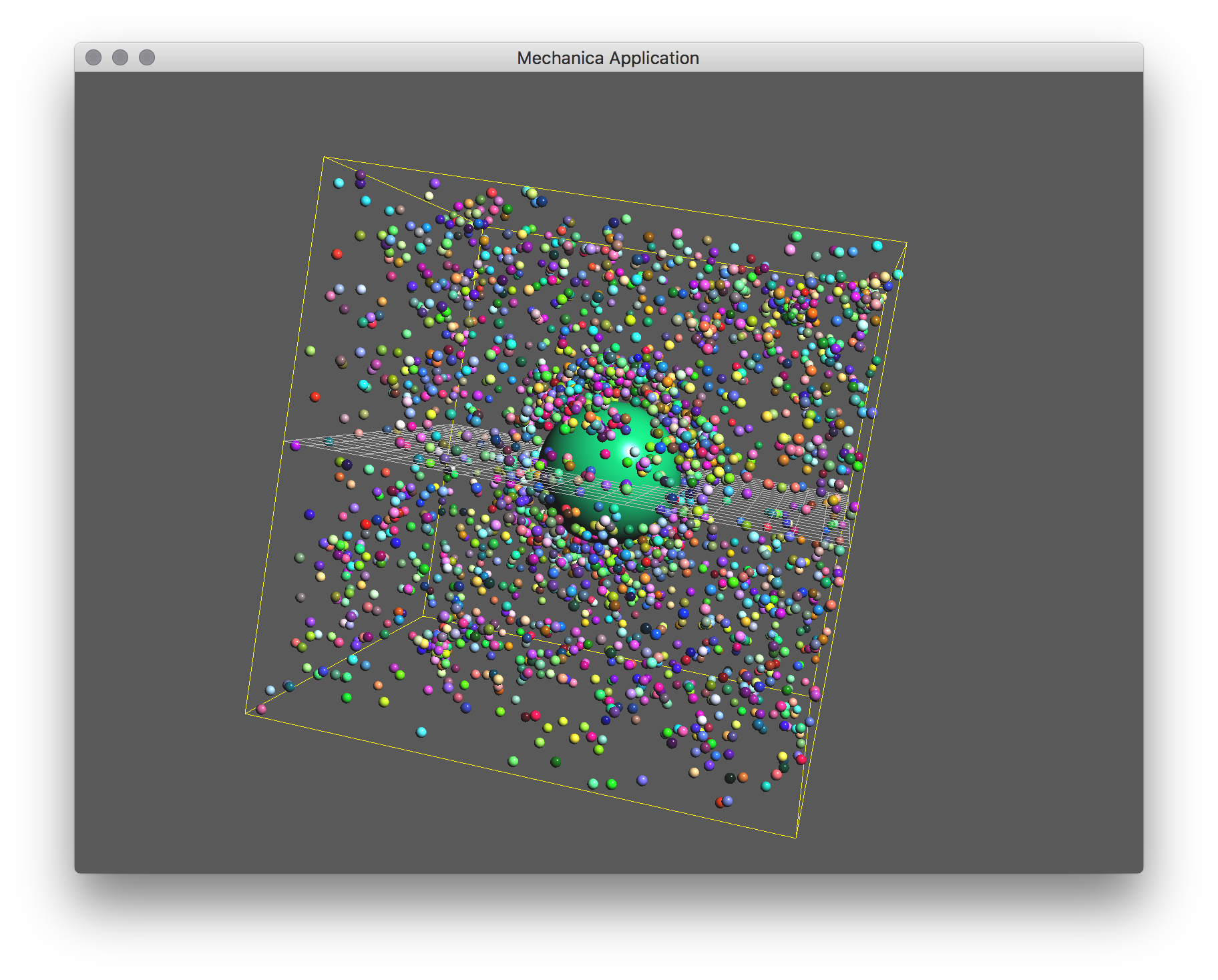Two Types¶
We can make a model with more than one type simply by making different
Particle derived classes:
import mechanica as m
import numpy as np
# potential cutoff distance
cutoff = 8
count = 1000
# dimensions of universe
dim=np.array([20., 20., 20.])
center = dim / 2
# new simulator, don't load any example
m.Simulator(dim=dim, cutoff=cutoff)
Make a Big and Small types:
class Big(m.Particle):
mass = 500000
radius = 3
class Small(m.Particle):
mass = 0.1
radius = 0.2
target_temperature=0
Make a pair on interaction potentials, one between the Small particle types, and one betwen the Big and Small particles. Here, we choose the r0 paramter according to the particle types radius. TODO: next version will automatically pick up the radisu from the type definitions. We bind these two potentials between the different particle types.:
pot_bs = m.Potential.soft_sphere(kappa=10000, epsilon=100, r0=3.2, \
eta=3, tol = 0.1, min=0.1, max=8)
pot_ss = m.Potential.soft_sphere(kappa=50, epsilon=10, r0=0.2, \
eta=2, tol = 0.05, min=0.01, max=4)
# bind the potential with the *TYPES* of the particles
m.bind(pot_bs, Big, Small)
m.bind(pot_ss, Small, Small)
Make a single Big particle in the middle of our domain:
Big(position=center, velocity=[0., 0., 0.])
Make a disk of small particles above the big particle. We use the built-in :function::random_point function to fill regions of space with randomly distributed points:
for p in m.random_point(m.Disk, count) * \
1.5 * Big.radius + center + [0, 0, Big.radius + 1]:
Small(p)
And finally run the simulation:
# run the simulator interactive
m.Simulator.run()

Fig. 6 A basic two-type simulation, about 15 lines of Python. We are using Newtonian instead of overdamped dynamics, so each object has a good deal of inertia. We notice that single there is an attractive potential between the big and small objcts, most of the small objects are clusterd aournd the single big particle in the middle. Also notice that the small particles tend to produce clusters, as they too are attractive to each other.
The complete simulation script is here, and can be downloaded here:
Download: this example script: